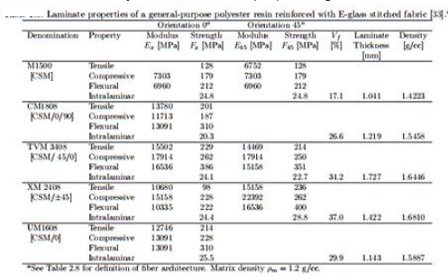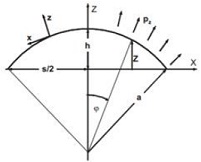Response to the following :
Redesign the laminate in Examples 1-2 by using a sandwich shell. Determine the thickness of the core material and the faces. The core material has a density of 50 kg/m3, E = 20 MP a, ν = 0.23. The faces are built with one or more layers of M1500 with properties given in Table. Specify the number of layers to be used.

Example 1:
Design of a dome. Part I. Compute the stress resultants on the dome. The dome intended to cover communication equipment. A composite material is selected to avoid interference with the signals being transmitted. Housing antennas and other electronics under the roof saves on equipment costs because the electronics does not have to be built for outdoor exposure. The dome must withstand its own weight and the weight of fixtures hanging from it, snow load, and eventual live load of workers performing maintenance. The dome, in the shape of a spherical cap, has span s = 24 m and height h = 2.4 m .

Example 2:
Design of a dome. Part II. Using the results of Example 1, determine the thickness required to resist buckling. Assume the stiffness of the material has no variability and it is adequately estimated by using carpet plots. However, if the structure is imperfection sensitive, small imperfections may yield large variations in buckling load. For this reason, a relatively small resistance factor is specified, ? = 0.5. The variability of the loads is accounted for by specifying a load factor α = 1.6. A more refined partition of load factors that takes into account the diverse nature of the loads, i.e, dead, live, and snow loads.